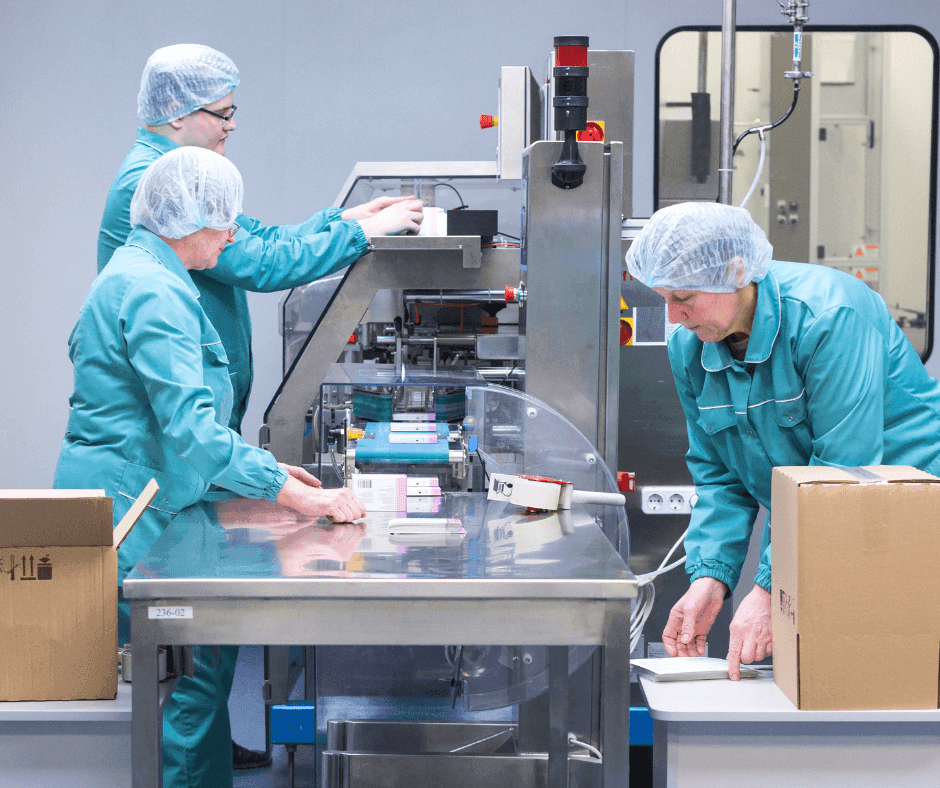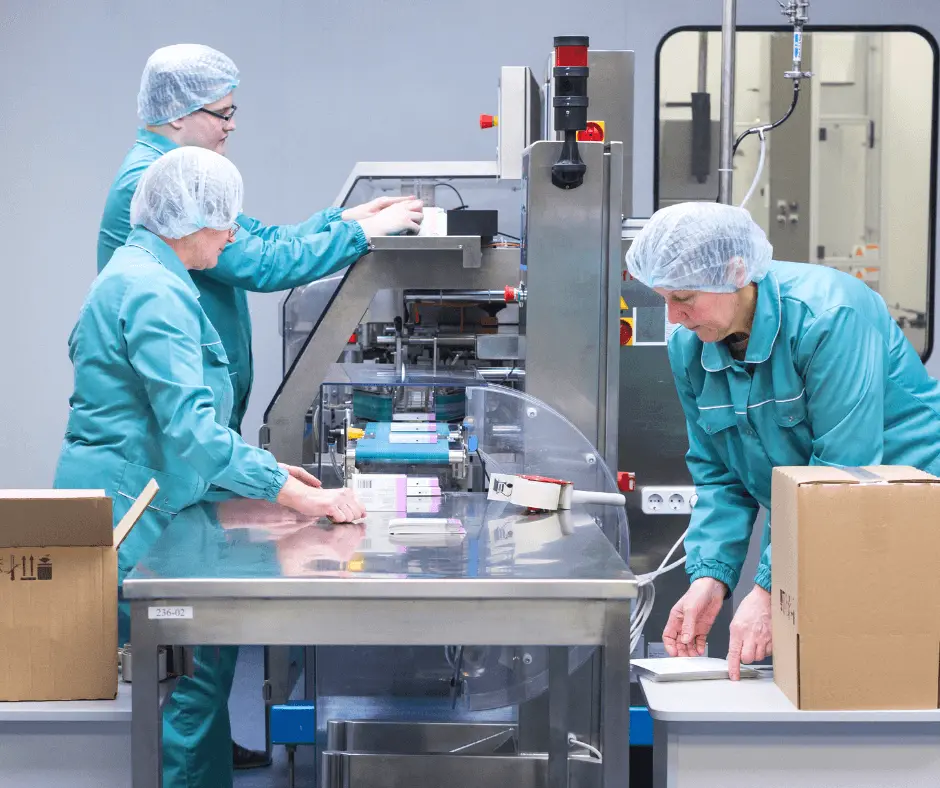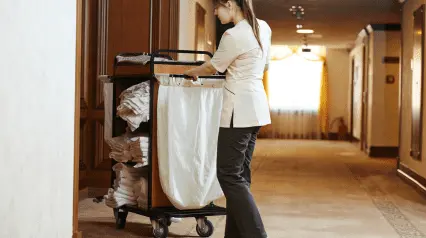What is Cleaning Validation?
Cleaning validation is a procedure of establishing evidence that cleaning processes for manufacturing equipment prevents product contamination. Cleaning validation should be properly documented to demonstrate Current Good Manufacturing Practice (CGMP) for finished pharmaceuticals.

Cleaning Validation: Inspection and Verification of Processes
Why is It Needed?
Cleaning validation is required because Active Pharmaceutical Ingredients (APIs) cross-contaminated with chemical residues and microbes can compromise patient safety. Ineffective cleaning processes not only lead to more downtime and batch failures, but it also result in FDA rejection and costly fines due to drug adulteration.
FDA Guidelines
While the U.S. Food and Drug Administration (FDA) has yet to release cleaning validation guidelines for pharmaceutical firms, they provide a reference material for the inspections regularly carried out by investigators and other FDA personnel. In the document, FDA generally expects:
- Written standard operating procedures (SOPs) for equipment cleaning processes that address different scenarios (e.g. one process for different batches, different processes between product changes, etc.)
- Written cleaning validation procedures, including who is responsible for performing and approving the validation study, the acceptance criteria, and when re-validation will be required
- Written cleaning validation protocols for the inspection of each equipment that address common issues (e.g. sampling procedures, analytical methods, etc.), conducting the validation according to the protocols and documenting its results
- Data-supported, management-approved, and final cleaning validation report stating whether or not the cleaning process for a specific piece of equipment or manufacturing system is valid
Improve your GRC management
Simplify risk management and compliance with our centralized platform, designed to integrate and automate processes for optimal governance.
Explore nowTypes of Sampling Methods
Currently, neither the FDA nor the federal regulation for equipment cleaning and maintenance (Section 211.67) mention certain types of cleaning validation. However, it is generally accepted in the pharmaceutical industry that there are two types of sampling methods for cleaning validation: direct and indirect.
- Direct sampling for cleaning validation is also known as the swab method, where a sterile material is systematically rubbed across a surface to be analyzed for the presence of residue.
- Indirect sampling for cleaning validation is often referred to as rinse sampling, where a solvent like water is rinsed in a specific area of clean surface and tested for traces of contaminants
Types of Cleaning Methods
While the total number of cleaning methods used in pharmaceutical cleaning validation has yet to be completely determined, this industry article has listed the most types so far and it generally includes the following:
- Clean-in-place Method – normally using fixed or rotating spray devices with a wash tank, recirculation pump, and associated piping
- Clean-out-of-place Method – often used for automated parts washing through cabinet or tunnel washers with cleaning, rinsing, and drying cycles
- Immersion Method – either agitated, where a cleaning agent in a process vessel is mechanically stimulated to achieve a cleaning effect, or static, where the process vessel is merely soaked with the cleaning agent
- Ultrasonic Washing – typically works better for intricate parts such as filling needles as it involves a tank equipped with ultrasonic transducers to induce cavitation
- High-pressure Spraying – serves to dislodge any residues on the surface through high-pressure, continuous, and directed water or cleaning solution
- Manual Cleaning – usually the most difficult cleaning method to validate; includes three most common techniques: wiping, sink brushing, and equipment brushing
Acceptance Criteria
Accurately setting the acceptance criteria for the limit in cleaning validation is crucial to determine the results of the study. To better evaluate whether or not cleaning methods are effective, cleaning validation acceptance criteria can be generally categorized into three various testing parameters:
- Physical Criterion: a visual inspection of the equipment should reveal that there are no particulate matters or residues
- Chemical Criterion: no more than 10 ppm (parts per million) of a product should be detected in another product and/or no more than 0.1% of the normal therapeutic dose of a product should appear in the maximum daily dose of another product
- Microbial Criterion: no more than 20 CFU (colony-forming units) for bacterial counts, no more than 2 CFU for molds, and/or no more than 25 CFU/25cm2 of contaminants in a sample

Cleaning Validation: Acceptance Criteria
Pharmaceutical Terms and Their Definitions
Cleaning validation in the pharmaceutical industry mostly entails certain jargons that manufacturing personnel should be familiar about. Here are twelve of the most common abbreviations related to pharmaceutical cleaning validation and what they mean:
- CGMP – Current Good Manufacturing Practice
- API – Active Pharmaceutical Ingredient
- ADE – Acceptable Daily Exposure
- PDE – Permitted Daily Exposure
- MACO – Maximum Allowable Carry Over
- NOEL – No Observed Effect Level
- LOEL – Lowest Observed Effect Level
- NOAEL – No Observed Adverse Effect Level
- LOAEL – Lowest Observed Adverse Effect Level
- LOQ – Quantitation Limit
- LOD – Detection Limit
- LD – Lethal Dose
FAQs
The world of cleaning validation can seem confusing at first glance, and there are a lot of questions surrounding the specifics of cleaning method procedures and cleaning validation protocols. Below are answers to some of the most frequently asked questions regarding cleaning validation:
Is cleaning validation required for dedicated equipment?
Yes, as long as any piece of equipment or manufacturing system is used in the production, processing, packing, or holding of drug products, cleaning validation is required. Moreover, the FDA inspects the cleaning process especially for dedicated equipment (e.g. fluid bed dryer bags) because they can be more difficult to clean and the likelihood of contamination can be higher.
When should cleaning validation be done?
Even when federal regulations do not specify exactly how often cleaning validation should be done, the FDA enforces Section 211.67a of Current Good Manufacturing Practice for Finished Pharmaceuticals to address the matter:
“Equipment and utensils shall be cleaned, maintained, and, as appropriate for the nature of the drug, sanitized and/or sterilized at appropriate intervals to prevent malfunctions or contamination that would alter the safety, identity, strength, quality, or purity of the drug product beyond the official or other established requirements.” [emphasis added]
In other words, the FDA expects equipment cleaning at the necessary frequency to prevent drug adulteration. Regularly performing cleaning validation is useful for determining how often equipment should be cleaned as required by law. More importantly, it is essential in verifying if cleaning processes are actually effective in preventing contamination.
As a general guide or starting point, cleaning validation should be conducted for the initial qualification of a manufacturing process or equipment. Additionally, this review published in the International Journal of Pharmaceutical Erudition enumerates five more instances when cleaning validation should be done:
- when there is a critical change in equipment cleaning procedures;
- when there is a critical change in drug formulation;
- when there is a significant change in the equipment;
- when there is a change in a cleaning process; and
- when there is a change in a cleaning agent.
How is the worst case selected in cleaning validation?
This article published in the Brazilian Journal of Pharmaceutical Sciences reported that their calculation of a worst case index (WCI) was based on drug solubility, difficulty of equipment cleaning, and occupancy of products in the production line. Refer to the solubility factor table below for more information:
Descriptive term |
Solubility (S) in water (ppm) |
Classification |
Score fs |
| Highly soluble | S > 1,000,000 | High solubility | 3 |
| Easily soluble | 100,000 < S < 1,000,000 | ||
| Soluble | 33,000 < S < 100,000 | ||
| Sparingly soluble | 10,000 < S < 33,000 | Moderate solubility | 2 |
| Slightly soluble | 1,000 < S < 10,000 | ||
| Very slightly soluble | 100 < S < 1,000 | Low solubility | 1 |
| Practically insoluble or insoluble | S < 100 |
Protocol Guide Questions
Developing a cleaning validation protocol for each cleaning process per piece of equipment is an integral part of government requirements, as specified in Section 211.67b: “Written procedures shall be established and followed for cleaning and maintenance of equipment, including utensils, used in the manufacture, processing, packing, or holding of a drug product.”
Effective cleaning validation can reduce quality costs, maintain product integrity, and improve patient safety. Listed below are three simple guide questions to help quality assurance and production departments design cleaning validation protocols effectively:
Can each equipment cleaning process be clearly understood?
Effective cleaning validation clearly defines:
- the solubility of the materials to be removed;
- the design and construction of the equipment and surface materials to be cleaned;
- the safety of the cleaning agent;
- the ease of removal and detection,
- the product attributes;
- the minimum temperature and volume of cleaning agent and rinse solution; and
- manufacturer’s recommendations.
Operational, validation, and laboratory personnel should understand all decontamination steps, process residue details, hold times, and worst cases related to the equipment and product. Quality managers should regularly evaluate acceptable limits, soiling conditions, and incoming raw material inspections.
Related: Key Determinants in Validating Manufacturing Processes
What systems and procedures are in place to ensure regulatory compliance?
The FDA inspects pharmaceutical manufacturers to verify compliance with relevant regulations, such as Section 211.67 (Equipment Cleaning and Maintenance). Some of its provisions include:
- Protection of clean equipment from contamination prior to use
- Inspection of equipment for cleanliness immediate before use
- Maintenance, cleaning, sanitizing, and inspection record-keeping
Establishing and implementing practical steps to make sure that baseline requirements are met can also enable pharmaceuticals to adequately prepare for FDA inspections. Use preparedness checklists and conduct internal audits to address the different types of FDA inspections.
How can cleaning validation protocols become more cost-effective?
If a pharmaceutical facility manufactures various products, multifactorial inputs in the manufacturing process makes cleaning validation more difficult. The monitoring strategy for cleaning validation should be well-documented, especially for manual cleaning procedures and visual inspections. Paper-based cleaning validation, reporting, and record-keeping can be challenging and time-consuming.

Cleaning Validation Protocol: 3 Helpful Guide Questions
Scale Your Enterprise Operations with Customizable Solutions
✓ Scale ✓ Data ✓ Security ✓ Integration ✓ Teams
Learn MoreUsing Software
Optimize your process, improve regulatory compliance, save time, and increase productivity with SafetyCulture (formerly iAuditor). Easily perform scheduled inspections, internal audits, and site walkthroughs using mobile devices. Prove the effectiveness of cleaning validation through proper documentation with SafetyCulture:
- Access ready-to-use cleaning validation checklists
- Schedule regular inspections and receive instant notifications
- Take or attach photos of non-compliance and add annotations
- Automatically generate comprehensive reports that are securely saved in the cloud
- Instantly share reports to key personnel
- Assign corrective actions with a priority level and due date
- Track performance of the cleaning validation program with real-time analytics


